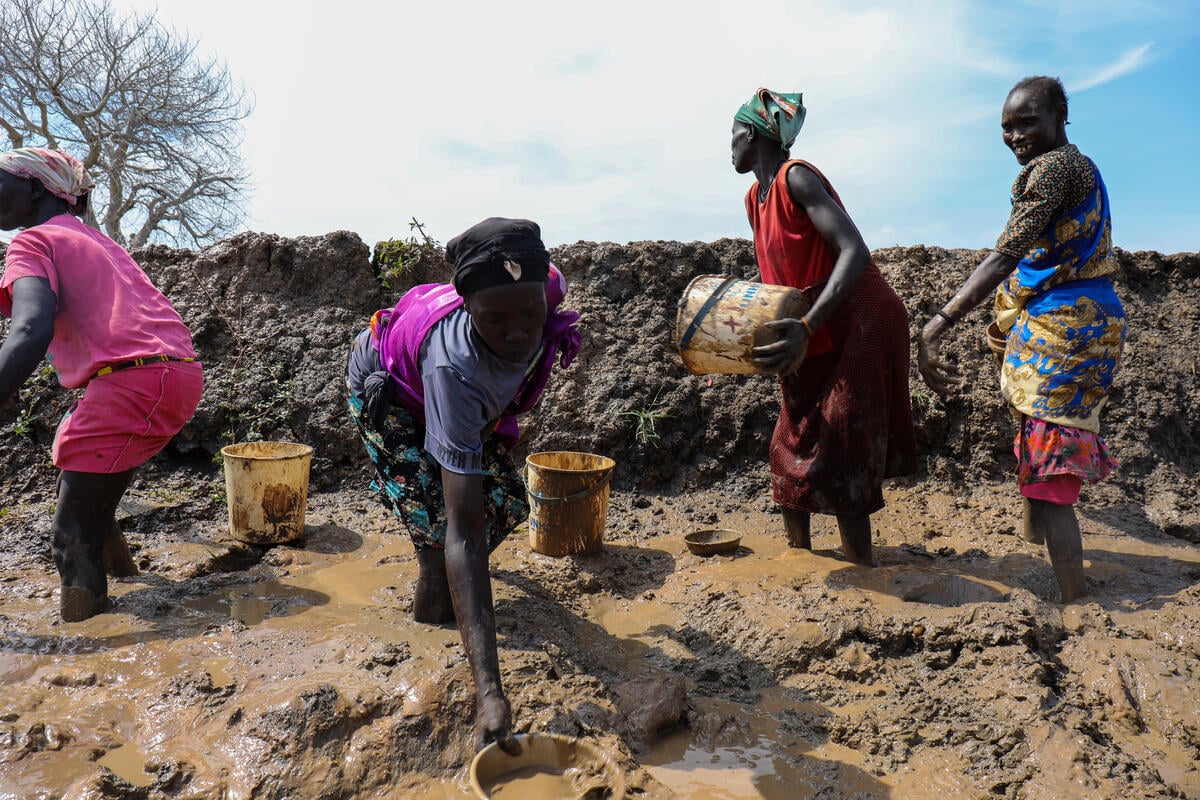Colombian town slowly returns to normal five years after massacre
Colombian town slowly returns to normal five years after massacre

BOJAYA, Colombia, May 2 (UNHCR) - Survivors of one of the single deadliest attacks in Colombia's decades-long armed conflict are still trying to come to terms with the bloodshed that devastated the town of Bojayá five years ago.
Many people have returned to the small riverside town in north-west Colombia's Chocó province and solid new buildings have been built, but the mood has changed and the threat of violence is still present. "You think you are going back home, but it is not the same place," says 65-year-old returnee Doña Bellamina.
In what has come to be known as the massacre of Bojayá, a mortar round crashed through the roof of the town church on May 2, 2002 and killed 119 people who were sheltering there to escape fighting between left-wing guerrillas and right-wing paramilitary units. Another 100 were wounded.
Doña Bellamina was in the church during the attack and remembers the many children who died. "Juan Alberto, his parents died too, Marcelina and her mother Raquel, Rosa Maria, the little one, her parents took out of school because they thought the church would be safer. Serafina, she died with her baby in her arms," she says. The list of boys and girls who perished that day goes on and on.
The entire population of Bojayá, some 4,500 people, fled after the attack. Doña Bellamina is one of 3,500 people who have since come back. She and others find it hard to recognise the old community.
Today, Bojayá looks very different from the string of other towns and villages along the banks of the many rivers in impoverished Chocó province. Instead of the dilapidated timber huts typical of this underdeveloped region, it boasts several rows of brick houses and a new school.
Since the tragedy, the government has invested several million dollars to rebuild the village. A total of 262 houses are being built as well as another school, a hospital, an aqueduct, a sports centre and a town hall. But despite the government's efforts, building work has been going slowly and the local community is calling for greater involvement in the development plans.
"Unless we can take part in decisions that affect our own lives, we will never be able to feel that we are home again," says Viherin Velásquez Vásquez, who is part of the Comité 2 Mayo (May 2 Committee) funded by survivors and families of victims of the massacre
From the start, UNHCR has supported the returning community with a presence on the ground, organizational support and various projects. But five years on, concerns remain about the lack of security along the Bojayá River and this is hampering reconstruction efforts.
While the country's armed forces are present in Bojayá itself, irregular armed groups still control some rural areas. Since 2002, there have been eight separate mass displacements from the area. Today, dozens of Afro-Colombian and indigenous communities along the river are still at high risk of displacement.
"Safety is an essential condition for successful return," says Julio Roberto Meier, UNHCR representative in Colombia. "As long as the conflict continues, the cycle of displacement and return followed by fresh violence and fleeing goes on."
He added that the decision to return must be a free one and called for continuing support to some 1,000 people from Bojayá who, five years after their displacement, live in precarious conditions in the provincial capital, Quibdó.
Meanwhile, a large mural on the walls of the rebuilt church in Bojayá tells what the community has lived through. It shows the destroyed church immediately after the attack, when wounded people with gushing wounds rushed to the exits while mothers stared at the corpses of their children in a sea of blood.
Doña Bellamina has been allocated one of the new houses in the modern part of town. She hopes to be able to move in soon. For her, the most important rebuilding is not to be done with brick and mortars.
"The truth. We still don't know the truth of what happened that day," she says, echoing the sentiments of many of the survivors - and of thousands of other victims of the conflict throughout Colombia.
By Marie-Hélène Verney in Bojayá, Colombia









